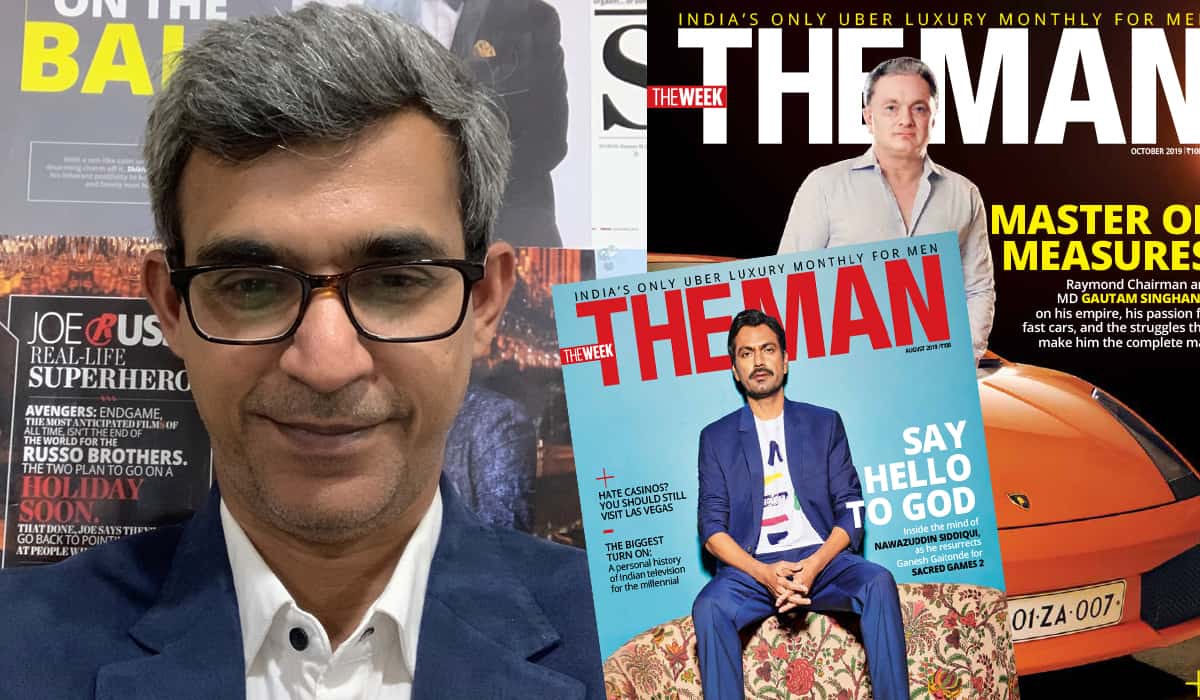‘Who da man?’ Well, a good shout is Bobby John Varkey, the Editor in charge of The Man magazine which is published in India. Hamant Verma caught up with Bobby for BizAsia to talk cover stars, pushy advertisers and even some ‘off limits’ chat.
The Man has a print run of 50,000 copies and is available pan India. The Man magazine is published by the more than 150-year-old Malayala Manorama Group, which also publishes the newsmagazine The Week, and the Malayala Manorama newspaper.
What makes the ideal front page for The Man magazine?
The Man magazine takes pride in featuring India’s best known faces on its cover every month. ‘Best known faces’, however, need not necessarily be only film stars. For us, the cover story is always about successful men and women who have a story to talk about; who bring with them a certain gravitas, an attitude that comes with expertise in their chosen field. The idea is to look different, and even surprise readers with our choice. It is about introducing the readers to a thought they could have missed about a certain celebrity.
In fact, even the actor was surprised to see himself in a formal get up. We did another cover shoot with Nawazuddin Siddiqui, another accomplished and top-rated film star in India, for our August cover.
Mostly, we try and stay away from celebrities (read film stars) who would be on the cover of every other magazine around the time they have a film release. We surprised everyone with our cover with one of the Hindi film industry’s most accomplished actors, Pankaj Tripathi, in January 2019. It was one of our best-selling issues because no other magazine thought of celebrating Pankaj’s achievements because he does not belong to the conventional idea of a ‘star’. In fact, even the actor was surprised to see himself in a formal get up. We did another cover shoot with Nawazuddin Siddiqui, another accomplished and top-rated film star in India, for our August cover.

We invest a lot of thought before deciding on the cover star, and it is always a tough choice. In the last year alone, we have had some really interesting men and women on our covers: Hollywood’s brand master Rohan Oza, Avengers; Endgame director Joe Russo (it was an India exclusive), Raymond group’s chairman and managing director Gautam Singhania, singer Ananya Birla, daughter of Kumaramangala Birla, on how she fought depression etc.
What challenges do you face in keeping the editorial pages free from too much influence from advertisers?
It is a tough ask, but we try to stay different – with our choice of cover personalities and the inside features – and our colleagues in marketing are able to use that as our unique selling point with brands. We are able to stand out of the clutter of ‘lifestyle’ magazines with a superior, and interesting, mix of stories and photo-shoots, and this is what attracts advertisers to us. There are instances when advertisers/brands want to be a part of our cover or fashion shoots, and we are able to accommodate them according to our theme.
The only area we stay away from is writing about sex for the sake of titillating. To that end, we strictly stay away from nude photo-shoots or write about sex the way other magazines do.
To be fair, I do not think there is any pressure from advertisers regarding the stories we do. It helps that we are a lifestyle magazine, and the brands which want to associate with us also speak the same language. So there is not much of a conflict there.
Would you classify The Man as anti-establishment?
No. We are a luxury lifestyle magazine, and our readers do not expect political/social stories from us.
Are there any subjects off limits in a magazine like yours in India- and do you think that will always be the case?
The only area we stay away from is writing about sex for the sake of titillating. To that end, we strictly stay away from nude photo-shoots or write about sex the way other magazines do. We do, however, have a regular sex column in every issue, but it is different from what is published in other magazines because it written by a woman writer and it touches on issues from a woman’s perspective.
In reference to a recent article in your magazine, do you believe that gender lines are blurred to the non-binary in India today?
I do not think it is a phenomenon in India yet. Gender lines may be blurring the world over when it comes to fashion, in India it is still to catch up. The design vocabulary may be changing fast, and there is a thought that the male wardrobe is more feminised today than ever before. For everyday wear, however, an average style conscious Indian male may experiment with a pink in his wardrobe, but his go-to colour is still the blues and navy blues.









